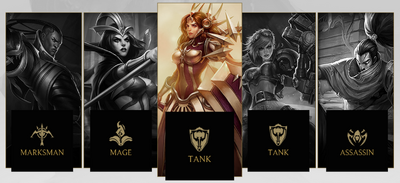Understanding League of Legends Champion Classes: A Complete Guide

LoL role position icons
League of Legends champions are categorized into distinct classes that define their playstyle and role in the game. These classifications help players understand champion interactions and team composition strategy.
Primary Classes and Subclasses:
Controllers:
- Enchanter: Support champions focused on protecting and empowering allies
- Catcher: Champions specializing in catching and disabling enemies
Fighters:
- Juggernaut: Durable melee champions with high damage but limited mobility
- Diver: Mobile melee champions designed to reach and threaten priority targets
Mages:
- Burst: Champions with high single-target damage potential
- Battlemage: Sustained damage dealers with shorter ranges
- Artillery: Long-range spell casters
Marksman: Ranged champions focused on consistent damage output
Slayers:
- Assassin: Mobile champions specializing in eliminating priority targets
- Skirmisher: Durable damage dealers excelling in extended combat
Tanks:
- Vanguard: Engage-focused tanks with strong crowd control
- Warden: Defensive tanks protecting allies
Specialist: Unique champions that don't fit traditional classifications
Key Champion Attributes:
- Class: Core capabilities derived from champion statistics and abilities
- Role: Practical function in game (e.g., carry, support, jungler)
- Position: Traditional lane placement (Top, Jungle, Mid, Bottom, Support)
- Damage Type: Physical or magical damage focus
- Special Traits: Pushing power, early game bullying, late game scaling
Understanding class interactions is crucial for:
- Team composition building
- Counter-picking during draft phase
- Item build optimization
- Strategic gameplay decisions
Champions can adapt different roles based on itemization and team needs, allowing for flexible gameplay strategies while maintaining their core class identity.
Related Articles
League of Legends: Thresh Champion Strategy Guide

